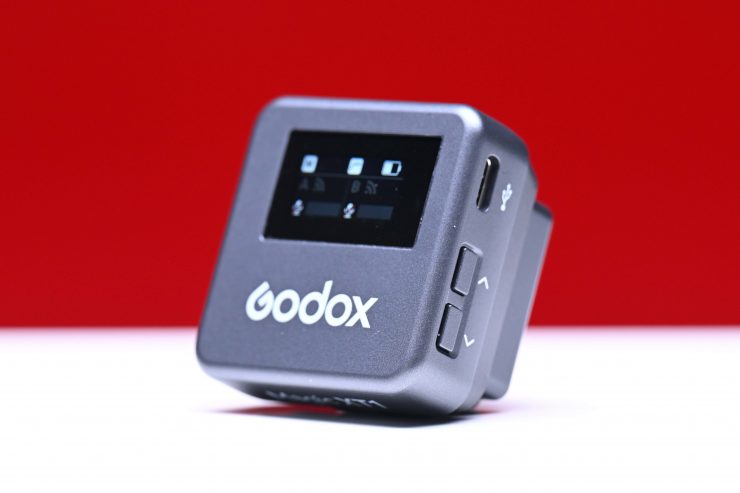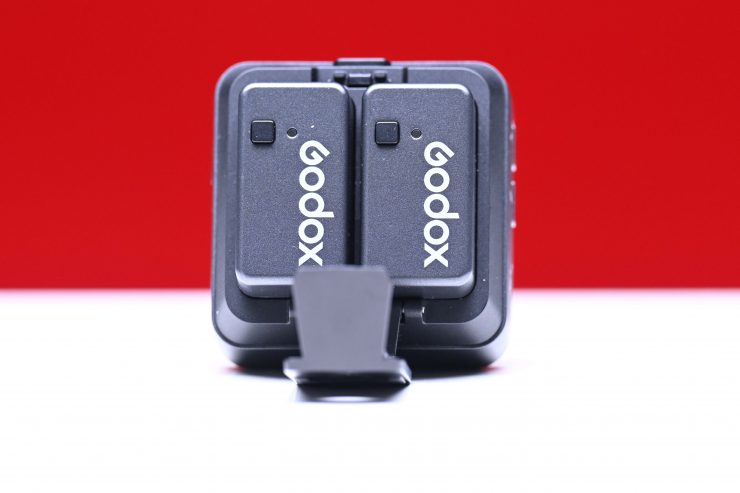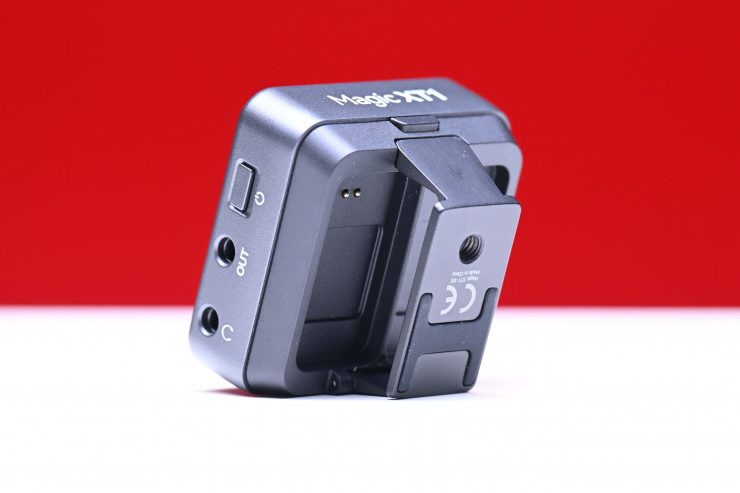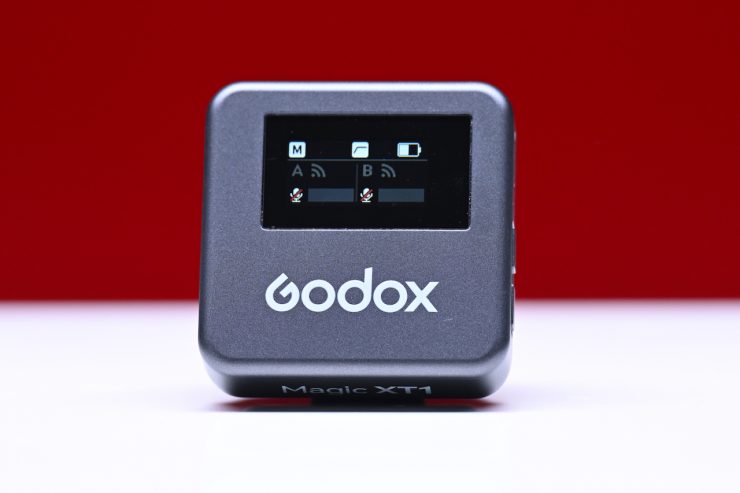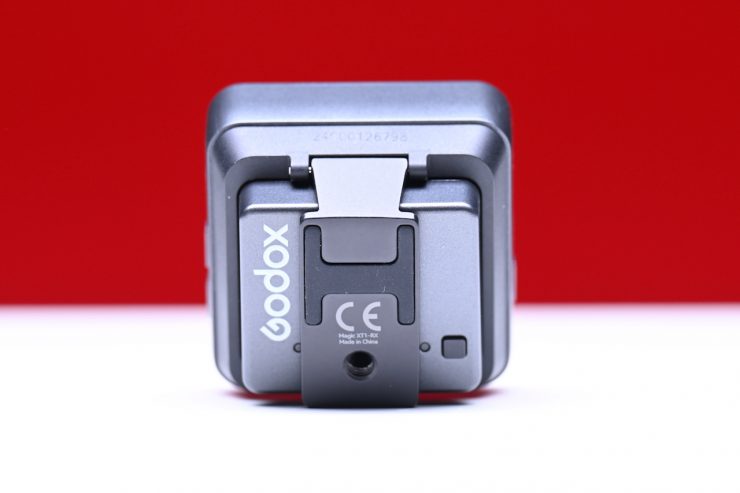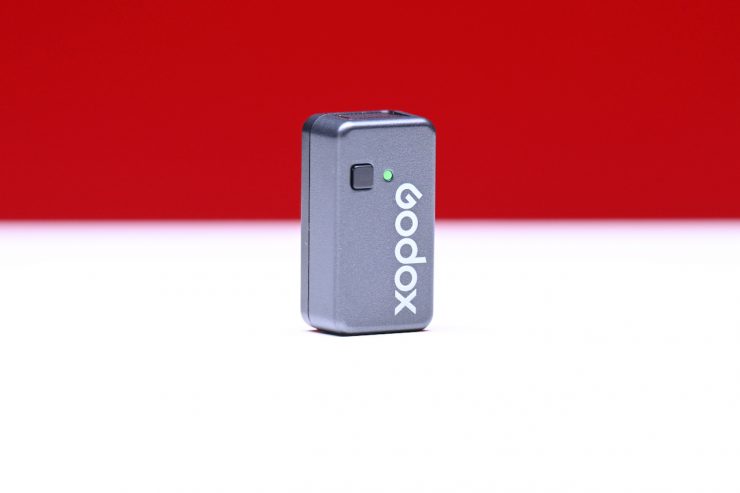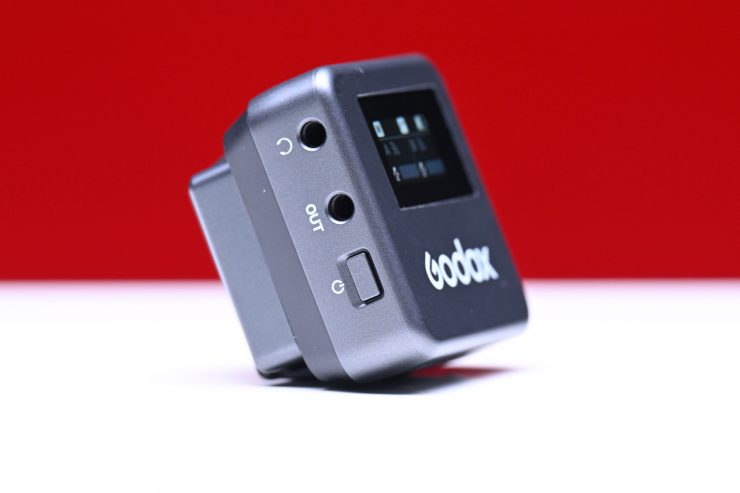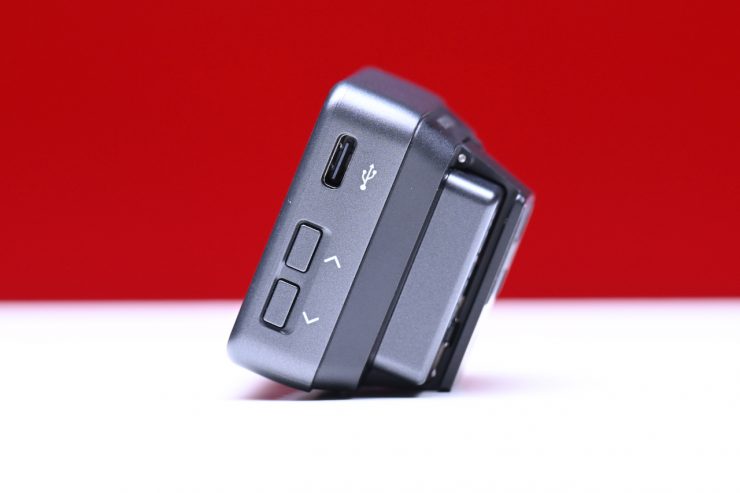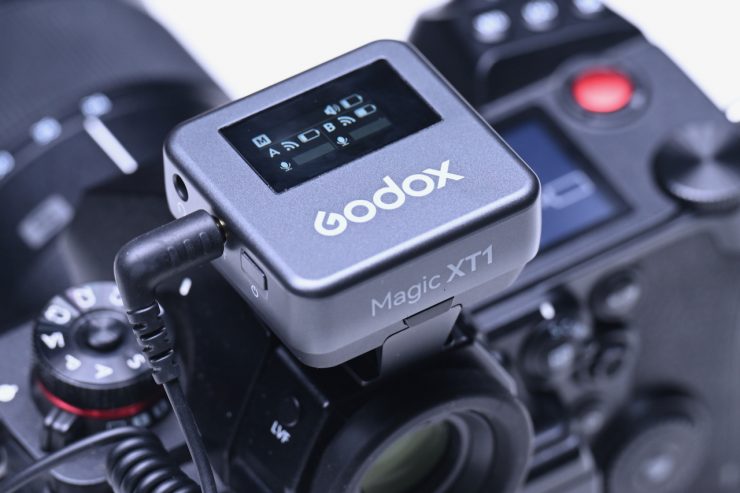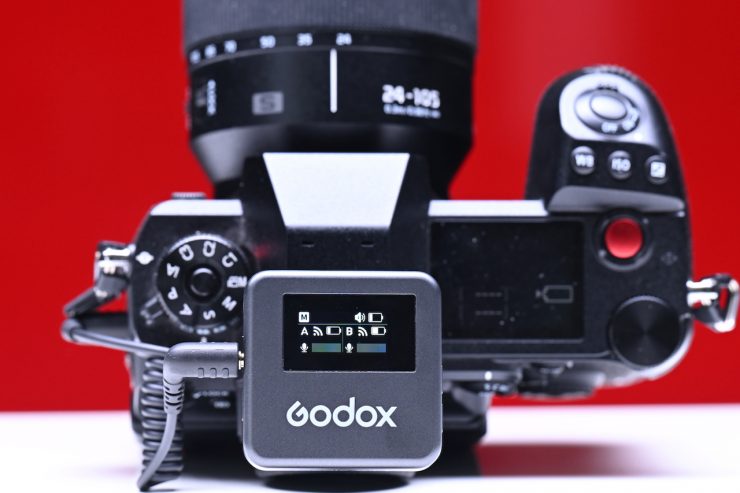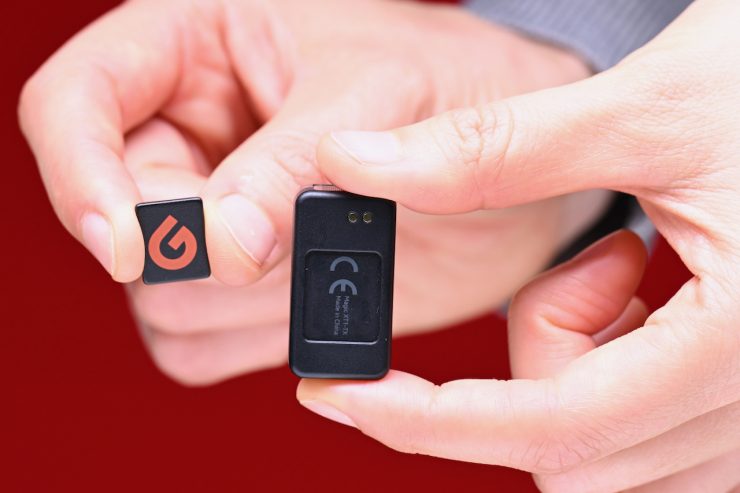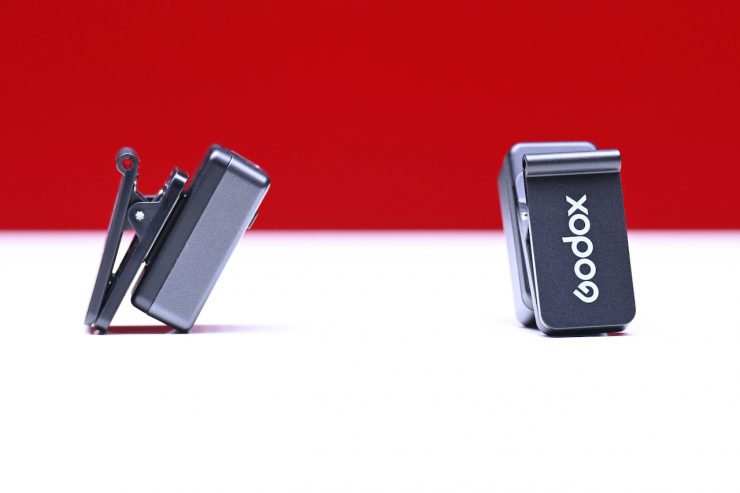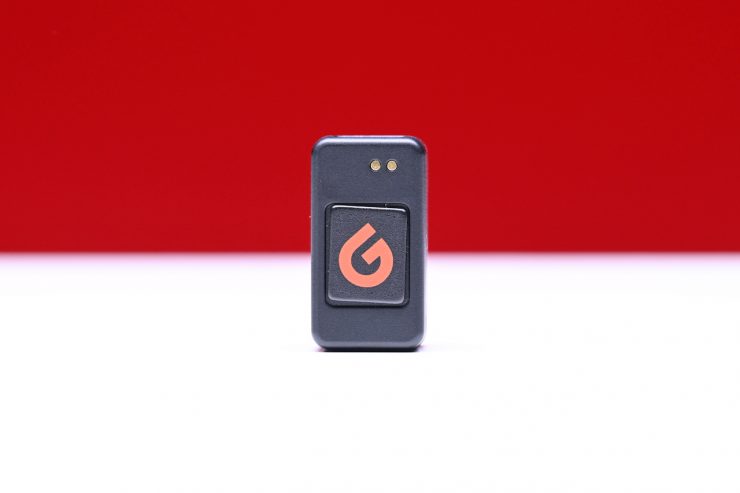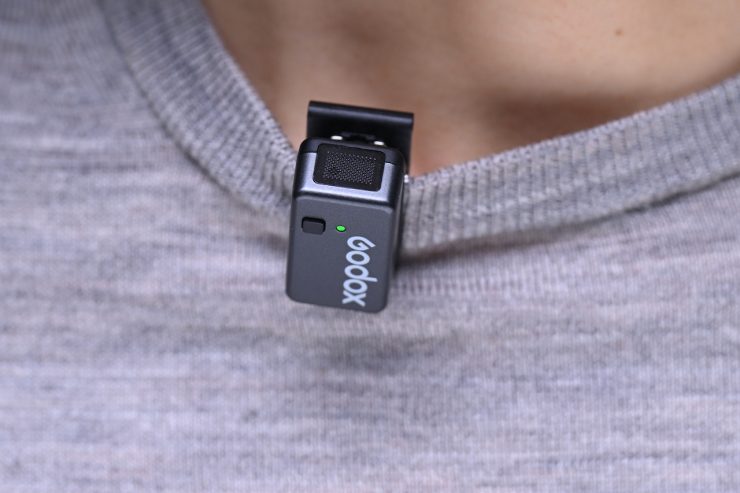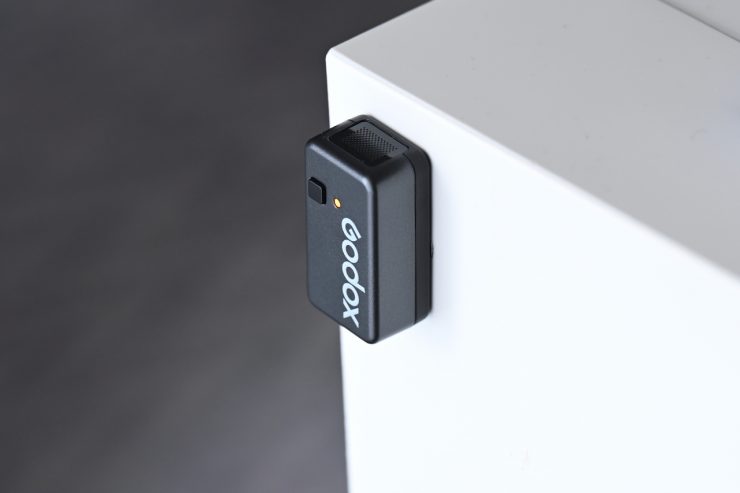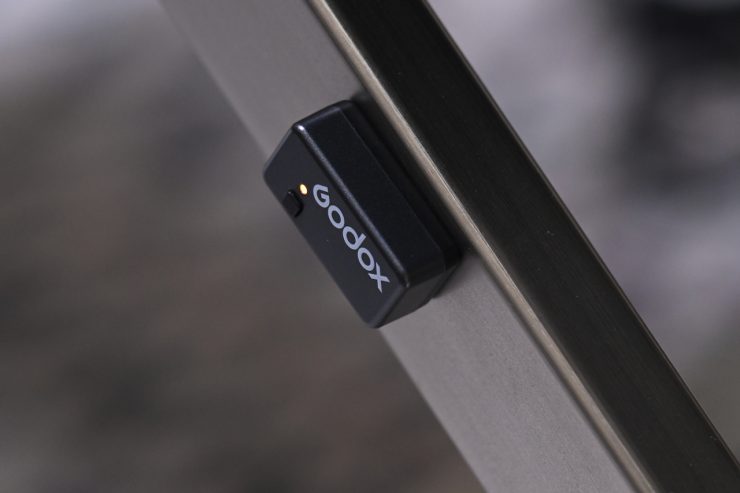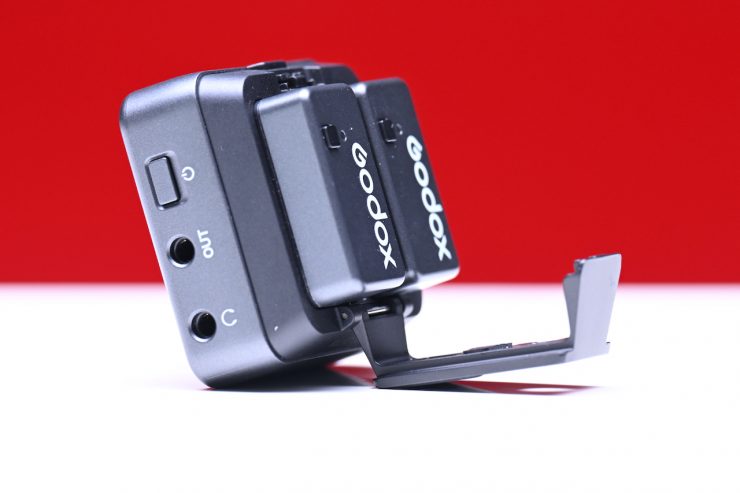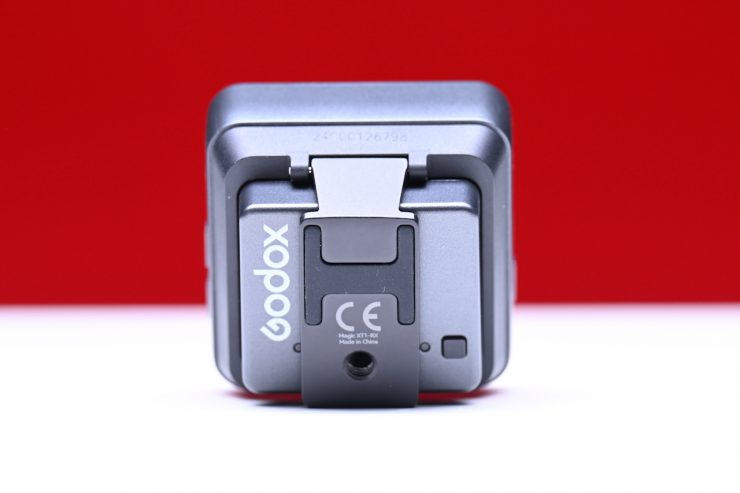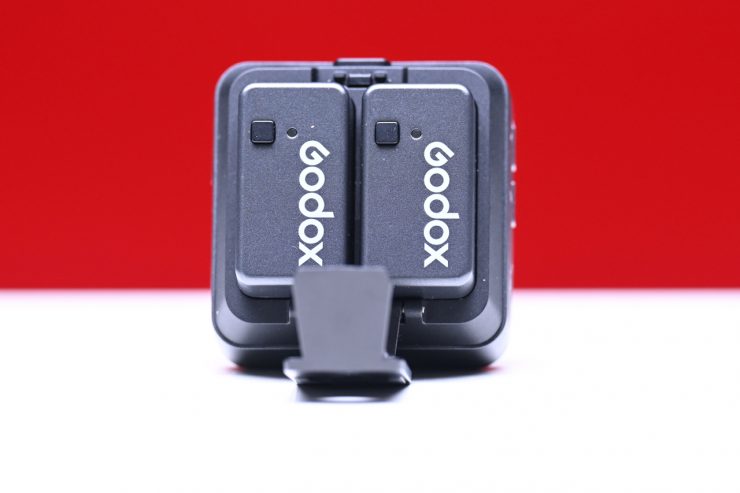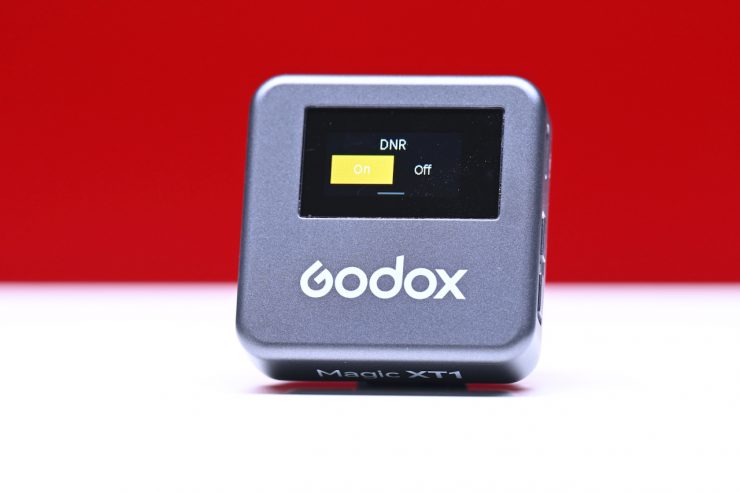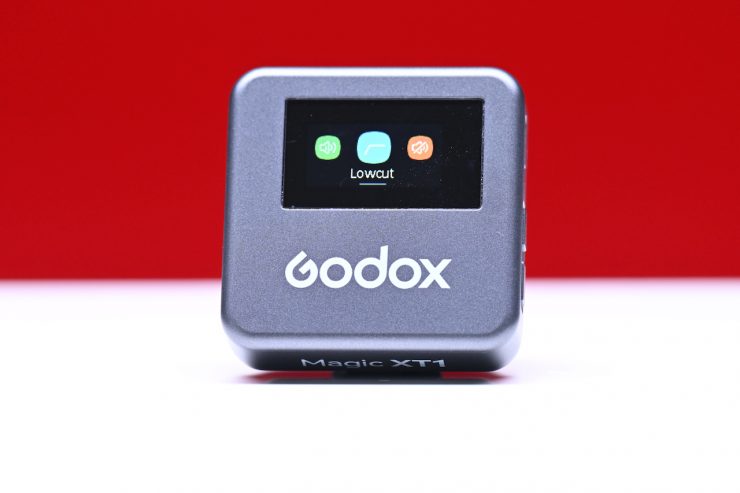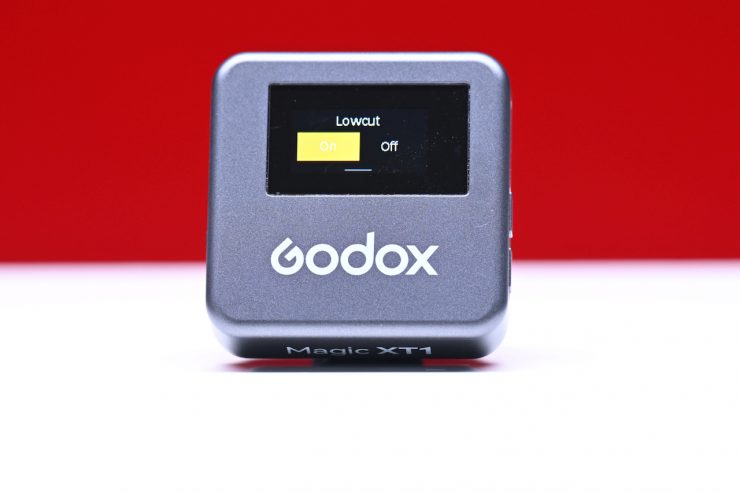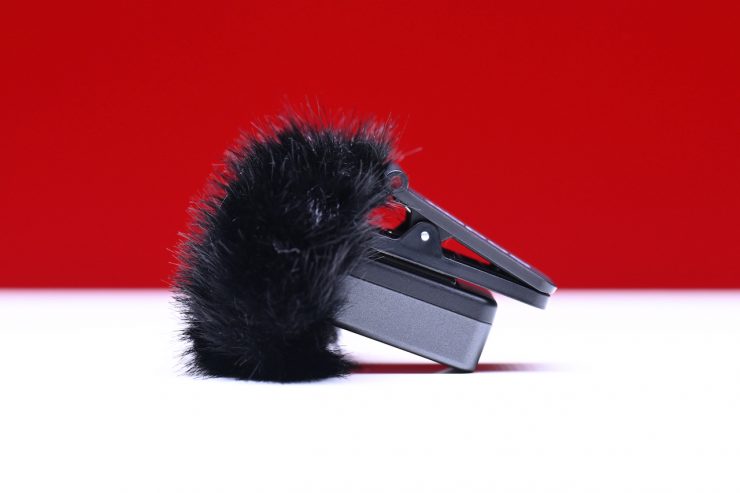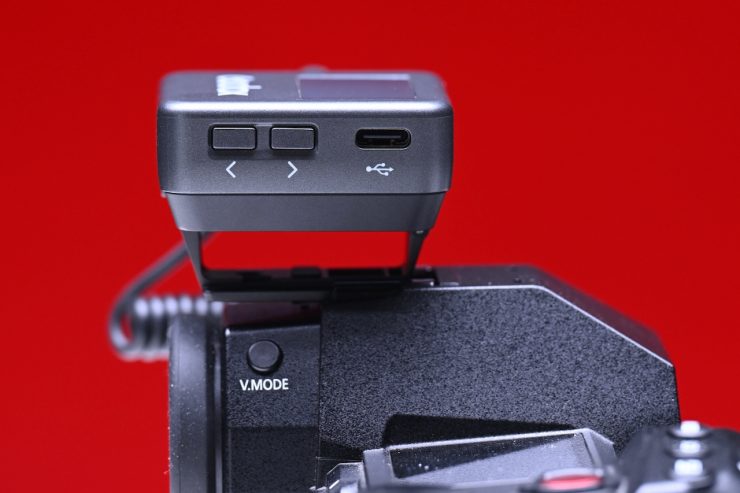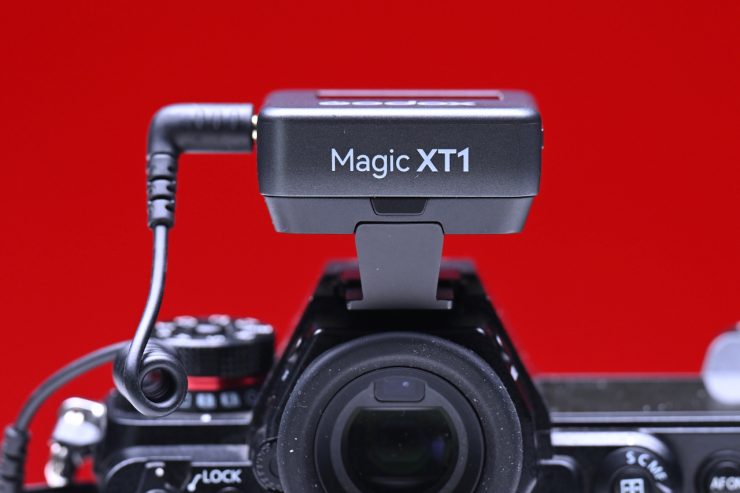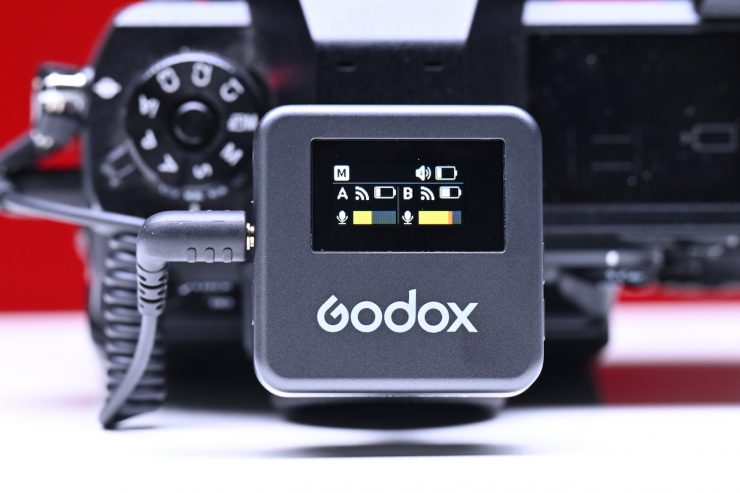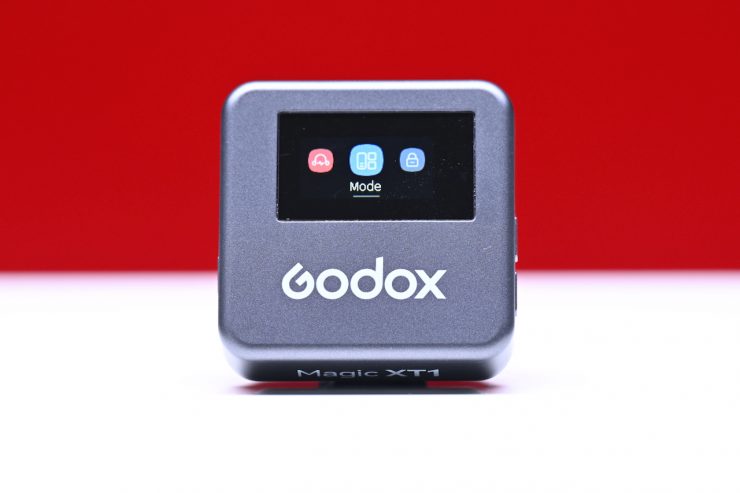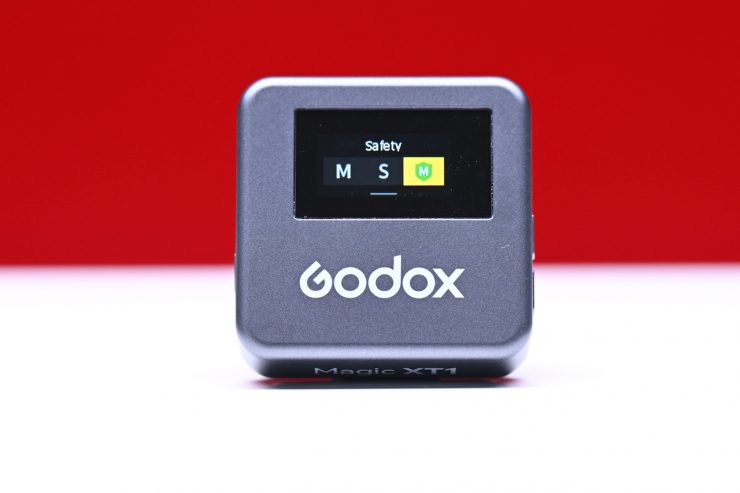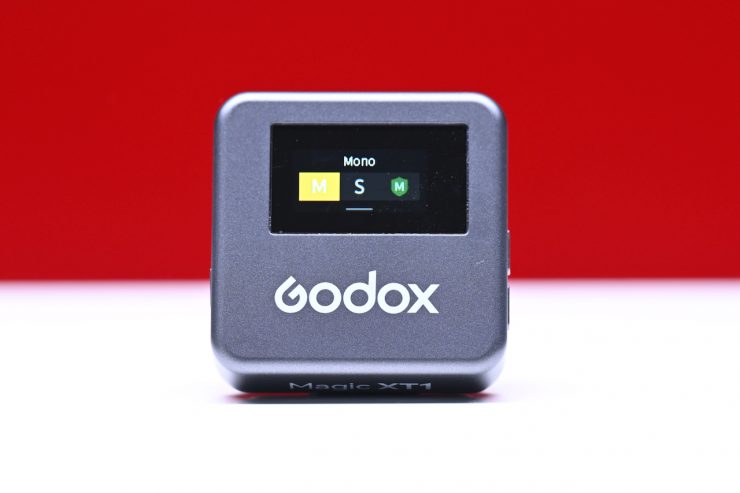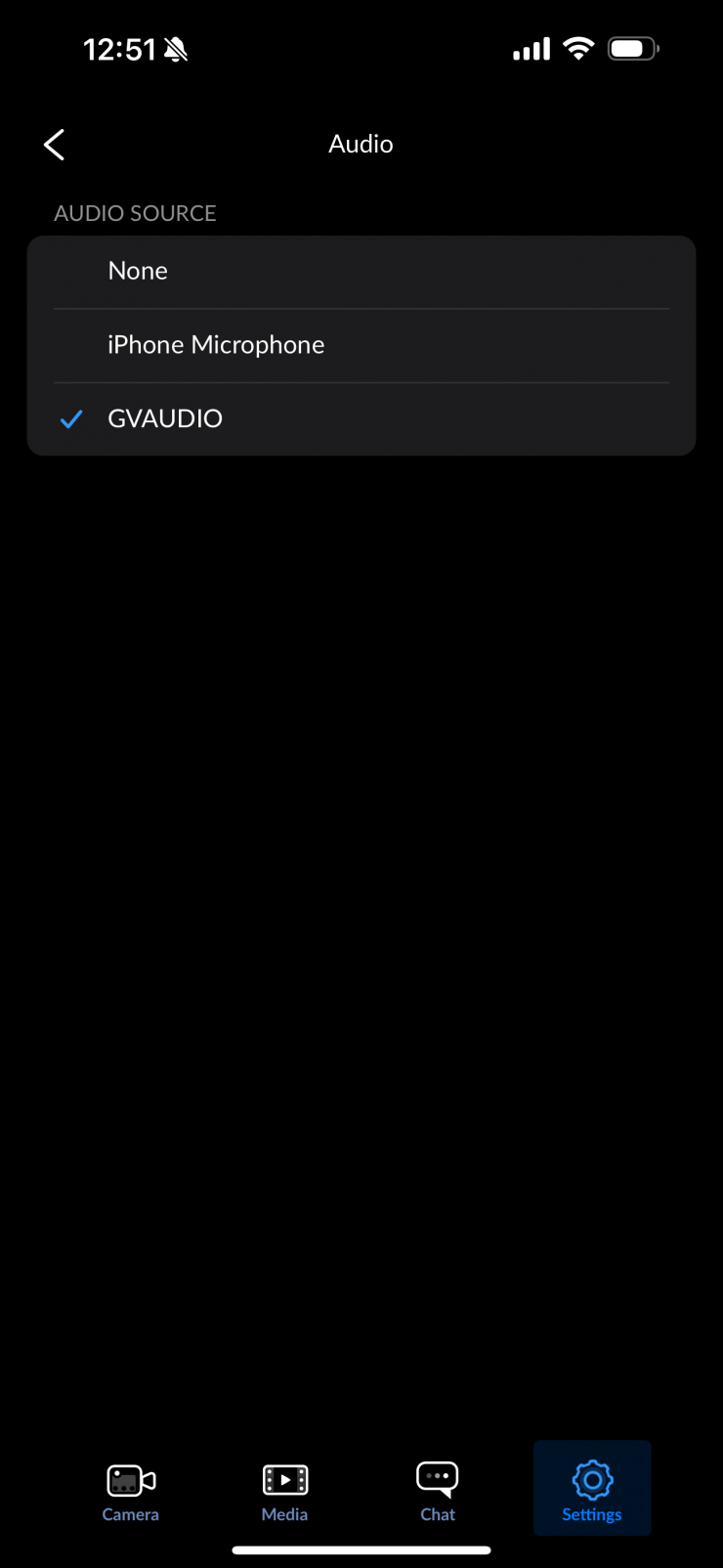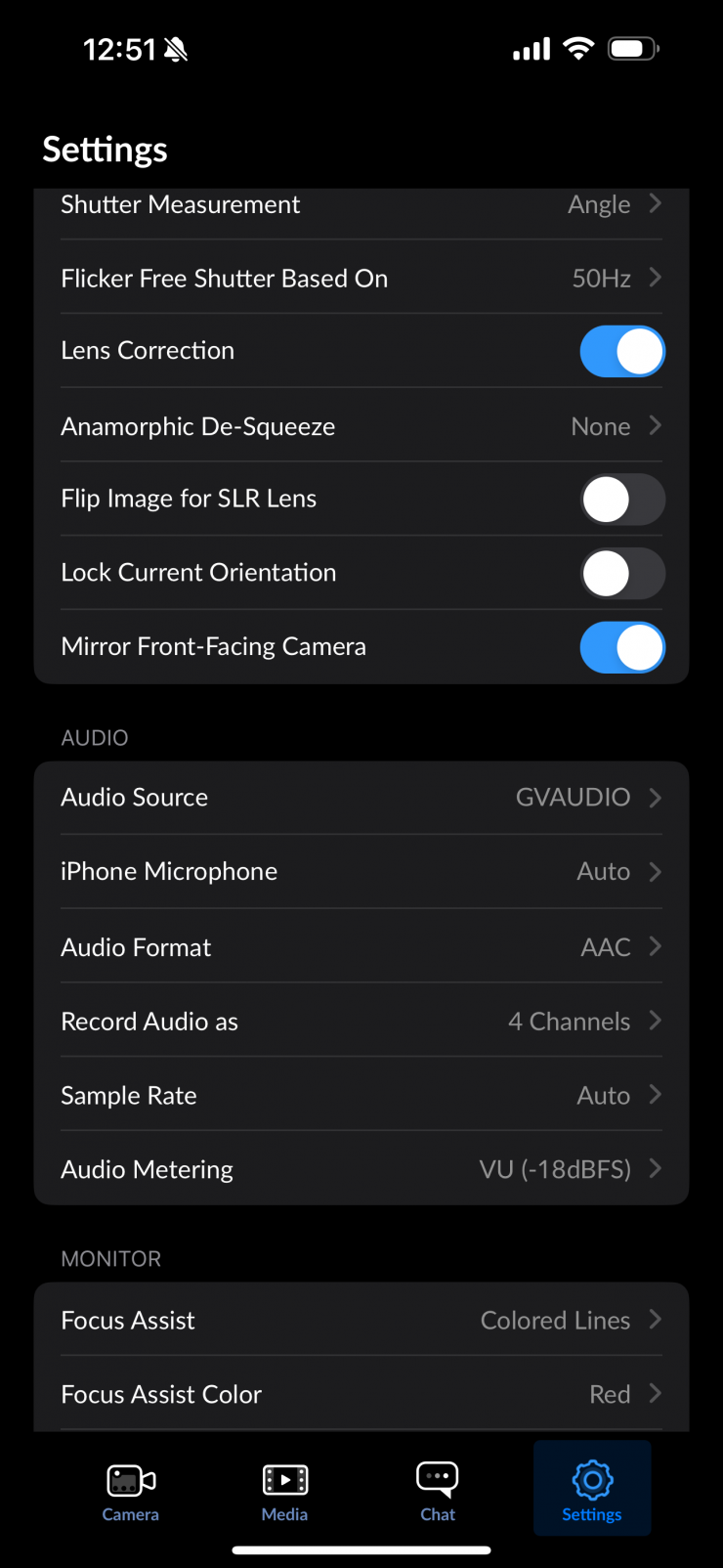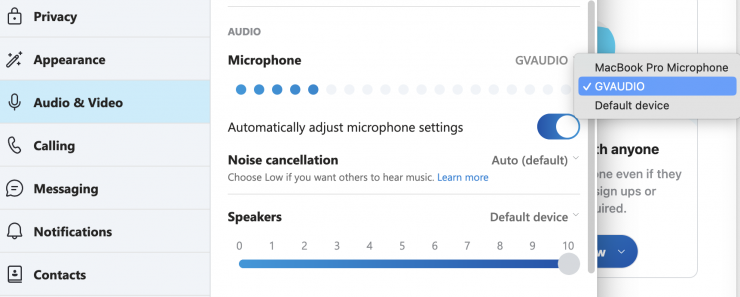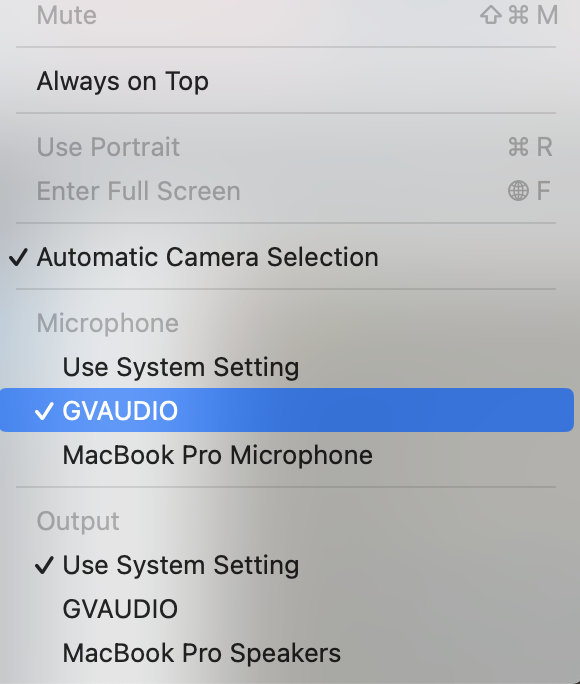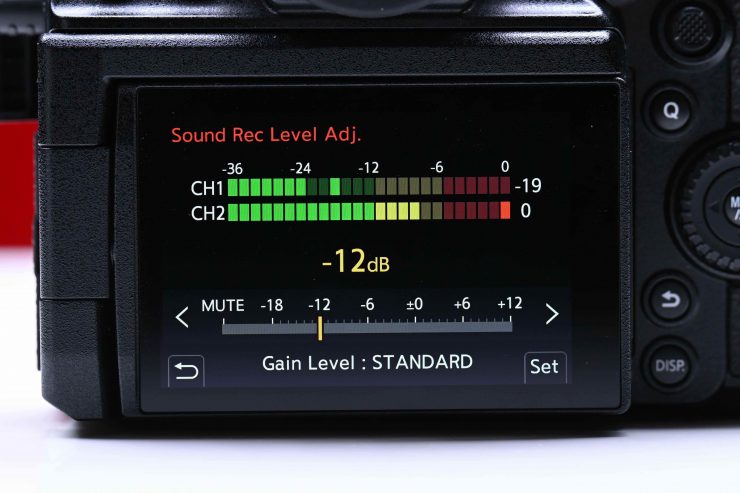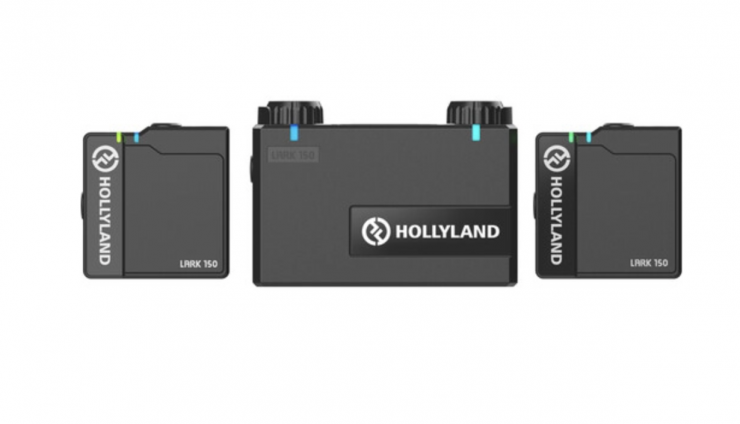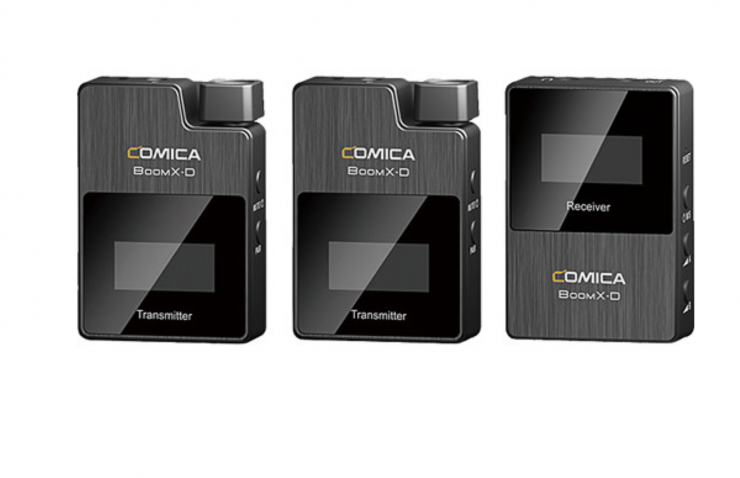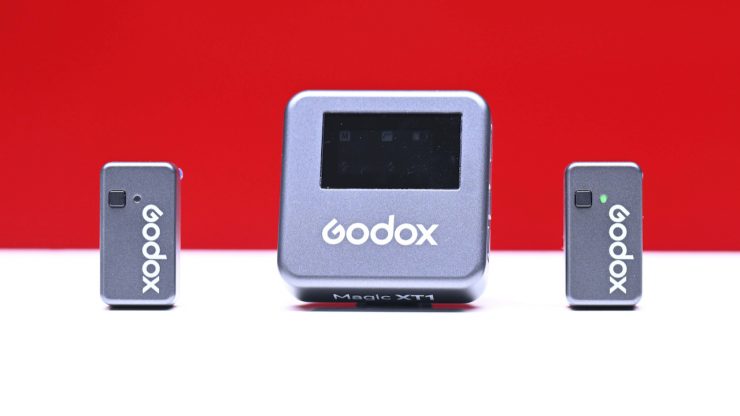
Godox recently announced its new Magic XT1 wireless microphone system. It is being touted as a lightweight wireless microphone solution for filmmakers, vloggers, and podcasters.
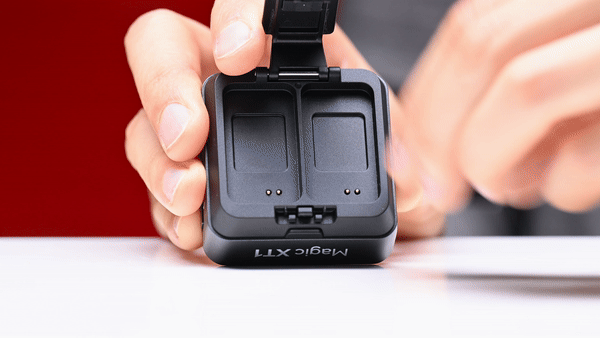
The Magic XT1 utilizes a 2+1=1 design. Hold on, you may be thinking that Godox mustn’t be very good at maths! But the whole concept is that the two TX units actually fit back inside the RX unit for charging and storage.
It is good to see an affordable wireless audio system where someone is at least trying to do something slightly different.
Since the launch of the original RØDE Wireless Go, which at the time was the world’s smallest wireless microphone system, we have seen a plethora of options come to market with fairly similar features. The RØDE Wireless Go immediately struck a chord with budget filmmakers, YouTubers, and Vloggers and that is undoubtedly why we have seen so many other companies releasing similar systems over the years.
According to Godox, the Magic XT1 boasts premium microphone components that can deliver 48kHz/24bit Hi-Res audio with a 70dB SNR and a Max. 115dB SPL.
Key features
- Globally universal 2.4GHz wireless transmission technology.
- The maximum wireless transmission distance up to 200m (sight distance). Clear and stable sound quality with denoise function.
- Output volume adjustment and silent function available. Mono/Stereo/Safety mode freely switchable.
- Lowcut function effectively filters noise
- Buttons and colorful touching screen operation.
- Receiver can store and charge two transmitters.
Build Quality
The build quality is what you would expect for a product at this price. The TX and RX units are very lightweight and they are made out of some sort of composite material.
For its intended audience and user base I wouldn’t expect it to have an all-metal construction like much more expensive wireless systems. I think the build quality will be perfectly sufficient for most users, especially those who this product is targeted at.
The buttons are reasonably tactile and easy to use, as is the touchscreen interface.
Size & Weight
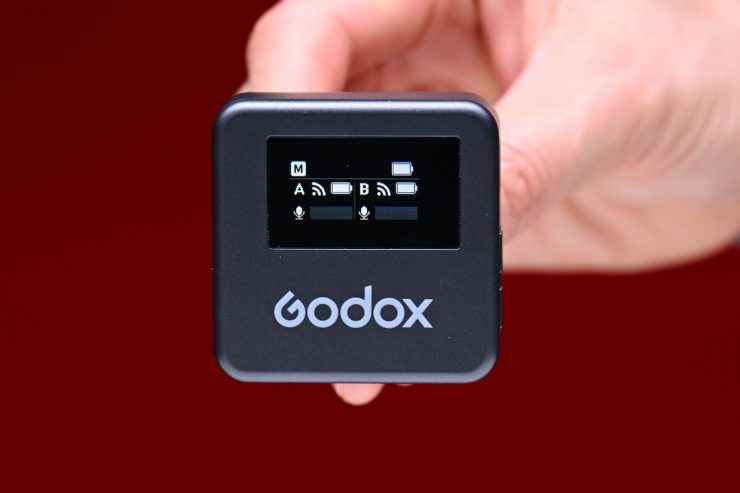
RX 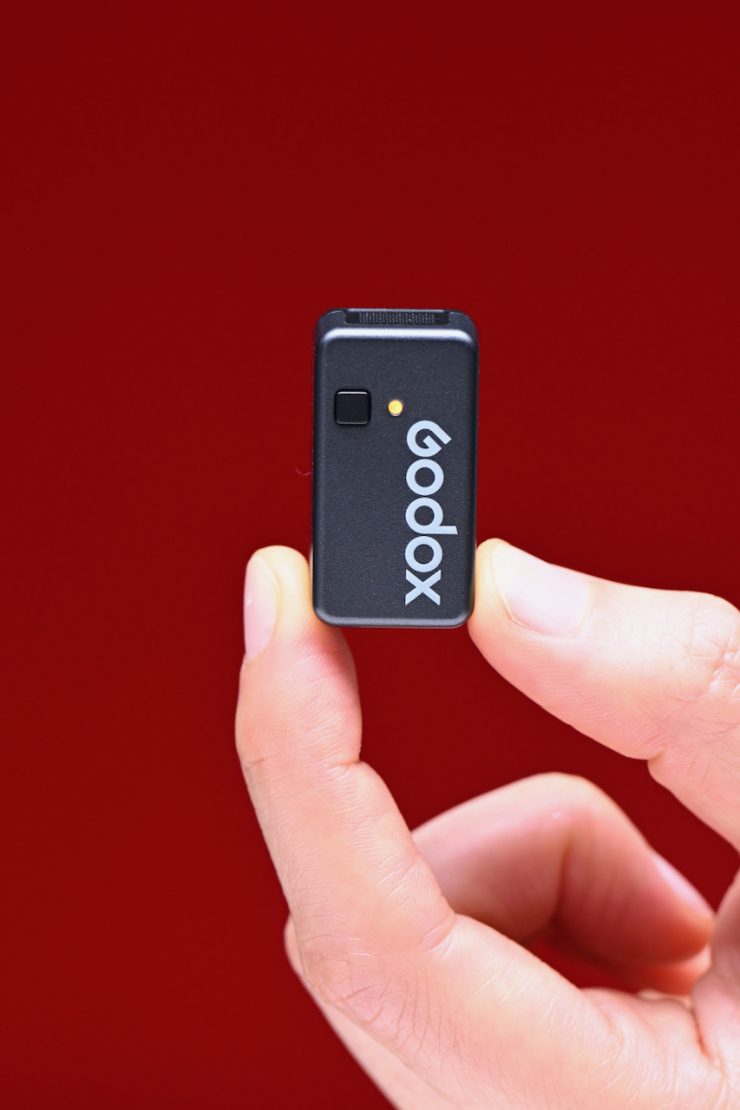
TX
The Magic XT1 TX units weigh 8g / 0.28oz each. The RX unit weighs 50g / 1.76 oz. The TX units have physical dimensions of 0.66″x 0.35″ x 0.25″ and the RX is 0.94″ x 0.94″ x 0.69″.

Godox Magic XT-1 
Hollyland LARK M2
While the small weight and size is nice to see, the TX units are still quite large. Above you can see how it compares in size to the Hollyland LARK M2.
The caveat of making a system where the RX unit also charges and hold the two TX units is that it is going to be significantly larger than most other competing products on the market.
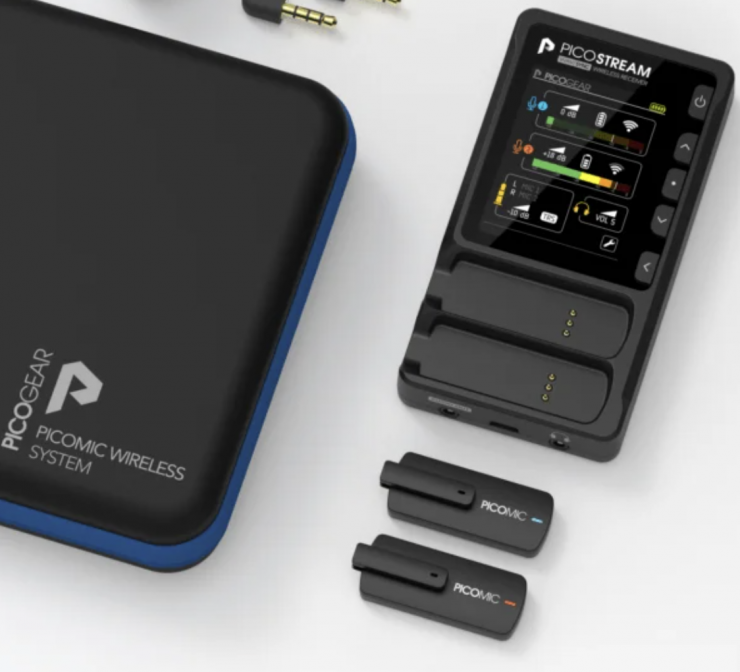
The Magic XT1 TX weight of 8g does actually make it the lightest solution on the market, a title that also belongs to the PicoGear PicoMic 2 Pro.
For a product that is primarily going to be used as a stand-alone clip-on microphone, you certainly don’t want anything too heavy as it will put a strain on a shirt and look untidy. However, size. and not only weight, can play a factor in this That is one of the caveats of using the magnetic clip as I will show you later.
How does the weight and size of TX unit compare to some other 2.4GHz systems on the market? Well, below you can see.
| WEIGHT | SIZE | |
| Godox Magic XT1 | 8g / 0.28 oz | 0.94 x 0.94 x 0.69″ |
| Hollyland LARK M2 | 9g / 0.32 oz | 1.0 x 0.4″ |
| PicoGear PicoMic 2 Pro | 8g / 0.28 oz | 1.7″ x 0.7″ x 0.28″ |
| RODE Wireless PRO | 35g / 1.2 oz | 1.8 x 1.7 x 0.8″ |
| RODE Wireless GO II | 30g / 1.1 oz | 1.7 x 1.8 x 0.7″ |
| DJI Mic 2 | 28g / 0.98 oz | 1.8 x 1.22 × 0.8″ |
| Synco WAir-G1-A2 | 35g / 1.2 oz | 2 x 1.7 x 0.6″ |
| Hollyland LARK 150 | 20.5g / 0.7 oz | 1.5 x 1.5 x 0.7″ |
| Ulanzi U-Mic AM18 | 23g / 0.8 oz | 1.4 x 1.8 x 0.6″ |
| Comica Audio BoomX-D D2 | 29g / 1 oz | 1.5 x 0.9 x 2.2″ |
| Godox MoveLink Mini UC | 12g / 0.4 oz | 2.1 x 0.8 x 0.7″ |
| Comica Audio Vimo C3 Mini | 13g / 0.5 oz | 0.6 x 0.8 x 2″ |
| Moza WE10 Pro | 34g / 1.2 oz | 1.7 x 2.4 x 0.8″ |
I am not going to feature every similar wireless microphone system in this comparison because there are so many on the market. I will stick to the ones that most people are familiar with.
Branding
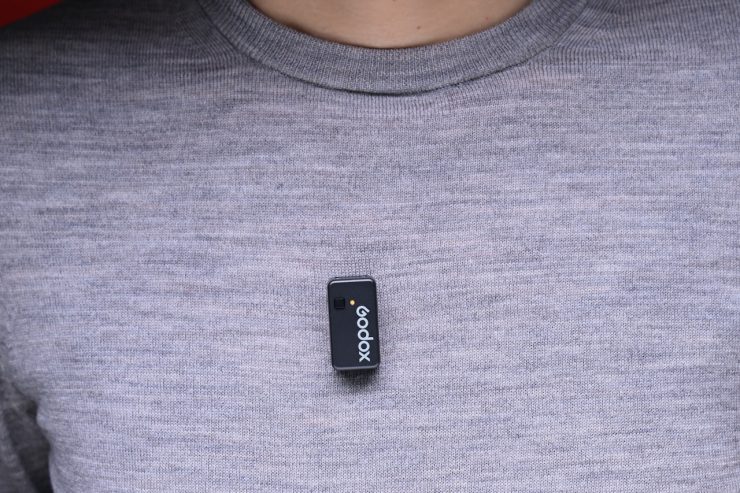
The Magic XT1 TX does have branding on it like just about every other similar system on the market. As I say in every single review about wireless microphone systems, I would have preferred to have seen no logos at all. Yes, you could just use some black tape, but that can also make something look unprofessional, especially if it is going to be seen in shot.
I almost always hide radio mic TX units so they are never seen, but the Magic XT1 TX isn’t really a product that was designed for you to do that, however, you could do it if someone was wearing a jacket.
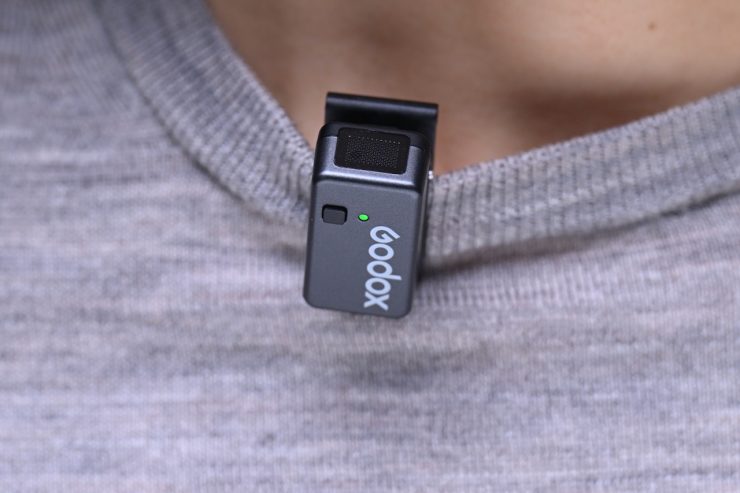
Another problem with trying to keeping the TX units inconspicuous is that they have a LED light on them.
Numerous Mounting Options
Godox gives you numerous ways to mount the TX units. The TX units feature a magnetic insert on the back that you can use in conjunction with a small-sized magnet to attach them to clothing, etc. You can also use the magnetic clip as well.
When you use the included magnetic clip I found that this combination was too heavy and it drooped on shirts. It would be ok on a jacket, but not not t-shirts, jumpers, etc.
Having the ability to mount the TX units on a metal surface is handy, especially if you need to use them as plant mics. You should remove the magnet if you are going to just place a TX unit on a metal surface, otherwise it will just get left behind and you will probably end up loosing it.
You can also use the magnet and place it on the outside and the TX unit on the inside of clothing. I am not sure why Godox felt it necessary to put a logo on the magnet. They don’t give you any stickers to cover the logo in the kit.
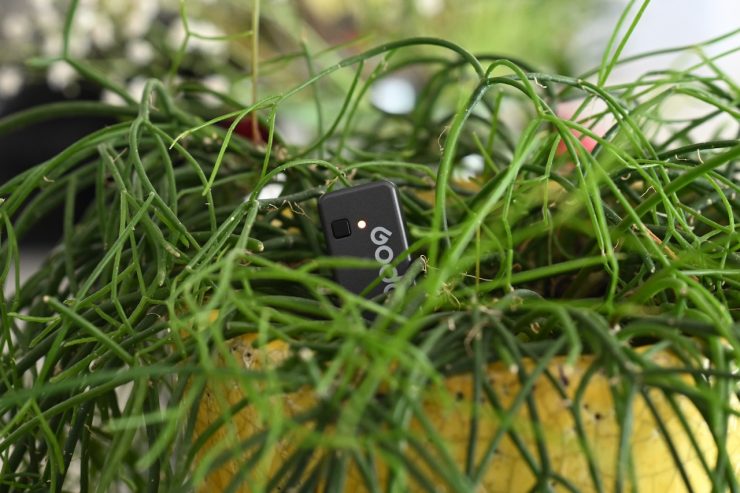
The TX units are small enough that they can be hidden behind or in things if you have no other way of capturing audio. This increases their versatility and usefulness.
Charge everything at once
As the TX units sit inside the back of the RX unit you can easily charge everything using a single USB-C cable. This is handy as not only do you not need to a separate charging case, but it makes it less likely for you to forget anything.

For storage and transportation, Godox also gives you a small case.
Both the RX and TX units will run continually for around 8 hours each. The biggest caveat is that you can”t charge the TX units separately. They can only be charged when they are connected to the RX unit. The RX unit will operate and charge at the same time if you have it connected to a USB-C source.
Built-in omnidirectional condenser capsule but no Lavalier mics
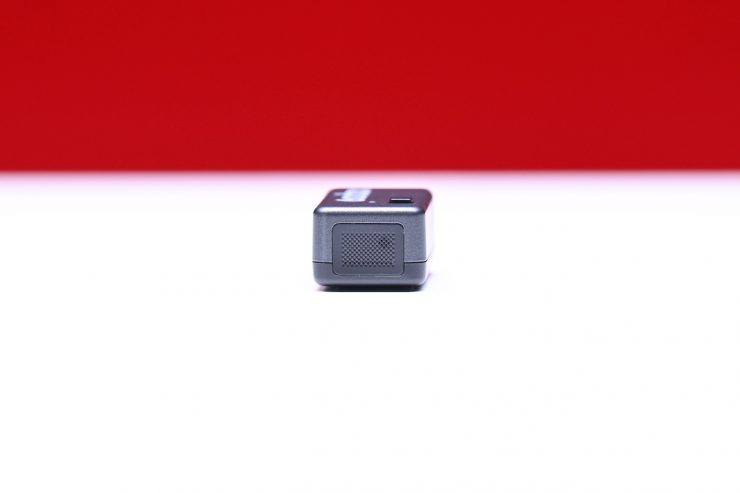
The Magic XT1 TX units feature a built-in omnidirectional condenser capsule. This looks to be a similar style of built-in microphone that is found on other competing products.
The internal capsule’s omnidirectional polar pattern is claimed to ensure reliable audio pickup even if mic placement is less than ideal, and the 20 Hz to 20 kHz frequency range should attenuate sub-bass tones such as rumble and boominess.
The sound pressure level is 115dB SPL and the signal-to-noise ratio is > 70dB. Again, this is in line with most other competing products.
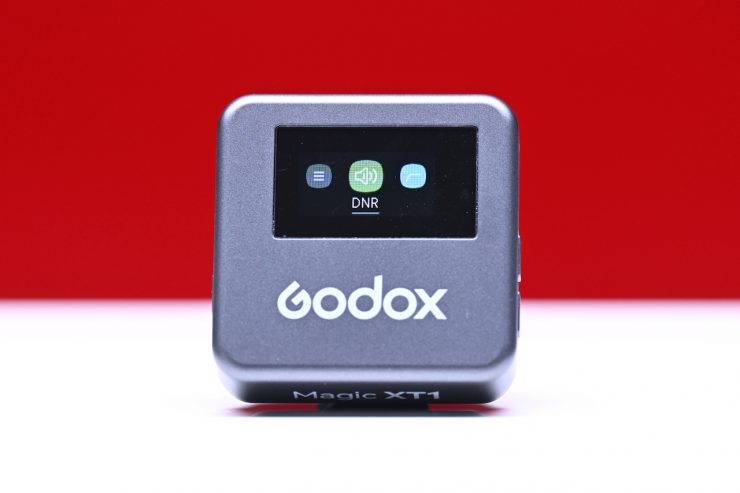
The microphone’s DNR (Dynamic Noise Reduction) is said to ensure more accurate sound recreation in noisy environments. I tested the DNR out and it worked pretty well.
You can turn the DNR setting On or Off.
There is also a Low Cut mode you can turn On or Off.
The TX units come with furry windsocks for recording in windy conditions. These work reasonably well, but they are almost comically large and quite distracting to look at.
The TX units don’t feature any 3.5mm input so you can’t connect up a Lavalier mic. This does somewhat limit their versatility.
RX Unit
The RX unit, as I mentioned earlier, is a little on the large side, but it does features a built-in cold shoe clip so you can easily attach it to the top of a camera.
You also get an included 3.5mm to 3.5mm output cable that lets you connect the RX unit to your camera or audio recorder.
Frequency band & Range
Just like so many other affordable wireless systems, the Magix XT1 utilizes the 2.4 GHz frequency band.
By using the 2.4 GHz frequency band users don’t need to worry about scanning for channels to get a strong signal. However, 2.4 GHz systems can be very susceptible to interference and they tend to have a limited operating range.
No on-board recording capabilities
Having onboard recording is a nice feature, especially for wireless microphone systems that work on the 2.4GHz frequency band.
It doesn’t come as any real surprise that the Magic XT1 doesn’t have any on-board recording capabilities. The TX units are too small and there is simply no space to put in any type of recording inside. Even if you wanted to put in a Micro SD card there wouldn’t be enough space.
Could Godox have put some type of small internal recording straight to a non-removable form of media, maybe, but again, I don’t think that would be possible due to the size.
You also have to remember that in the US, Zaxcom owns a patent regarding the simultaneous transmitting and recoding of audio from a wireless audio device.
Recording Modes
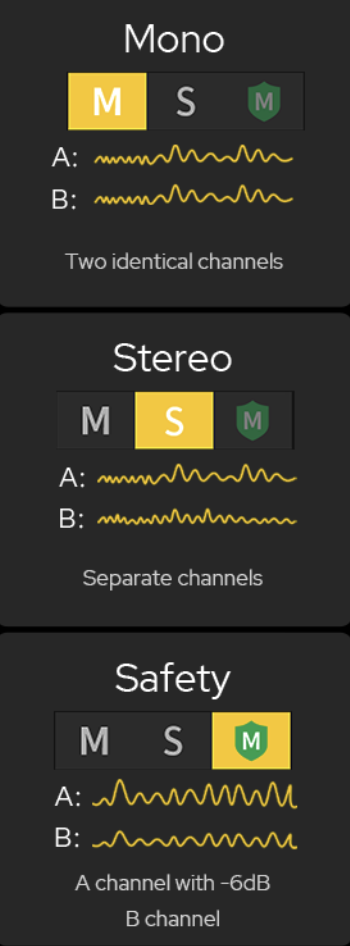
The Magic XT1 gives you the choice of 3 recording modes:
- Mono
- Stereo
- -6dB Safety Track
In Mono it will record two identical tracks. In stereo it will record two separate channels, and when you select the -6dB Safety Track, you will get one channel recorded at a lower level.
Use it with a smartphone or tablet
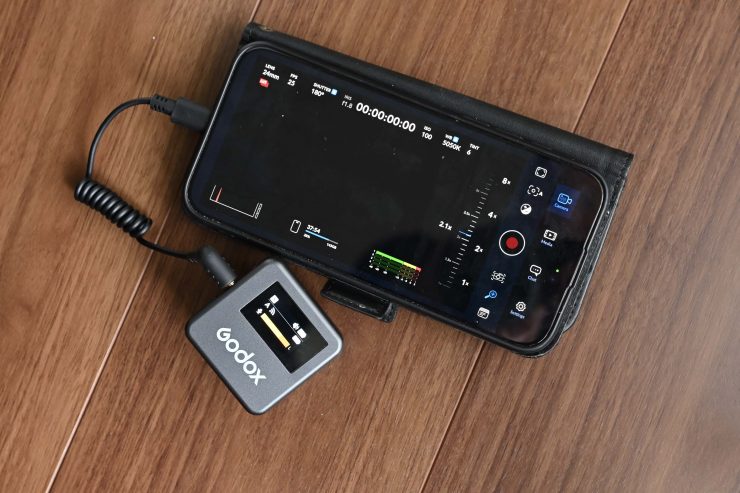
You can also plug the Magic XT1 RX unit directly into a smartphone or tablet.
This allows you to use it in conjunction with apps like the Blackmagic camera app.
Use it directly as a USB-C Mic Source
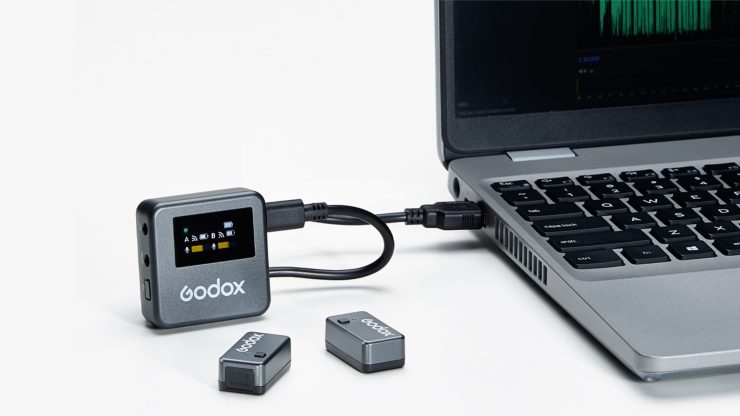
The Magic XT1 supports USB Audio Class (UAC) standards, so you can connect it to your desktop or laptop via a single Type-C cable.
This lets you utilize the system as a direct mic source for online video calls in Skype, Zoom, etc.
I tried this out and it worked well.
Display & Control
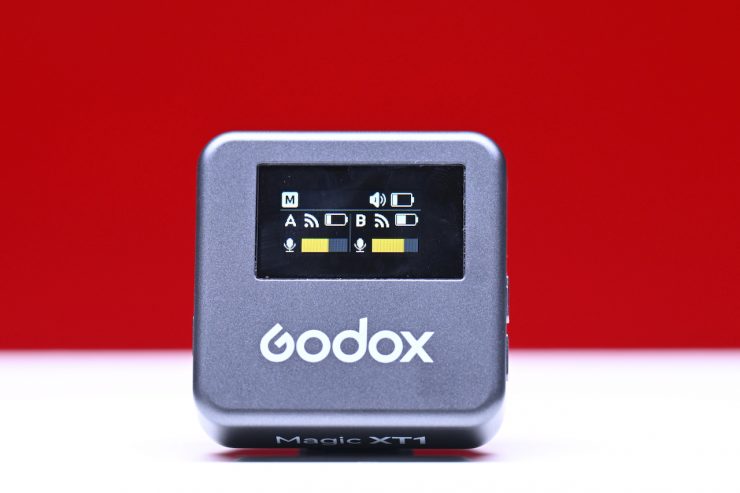
The Magic XT1 RX unit features an OLED touchscreen and buttons as well as a 3.5mm headphone jack for real-time monitoring.
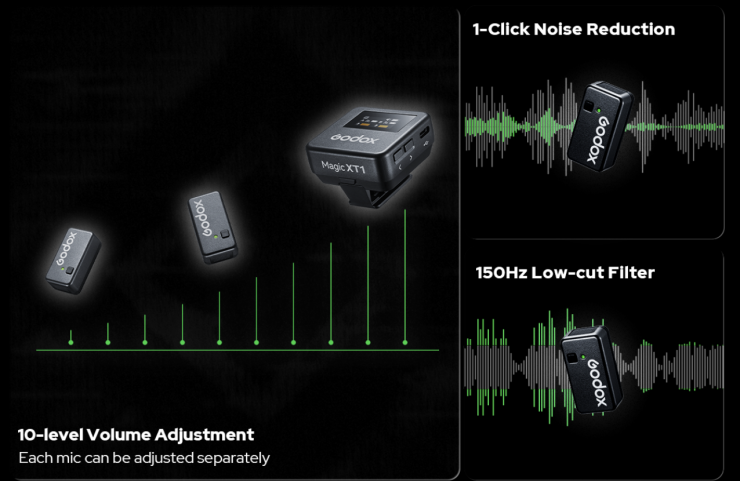
The system offers custom settings, including 1-click dynamic noise reduction (DNR), 150Hz low-cut filter, and 10-level volume adjustment.
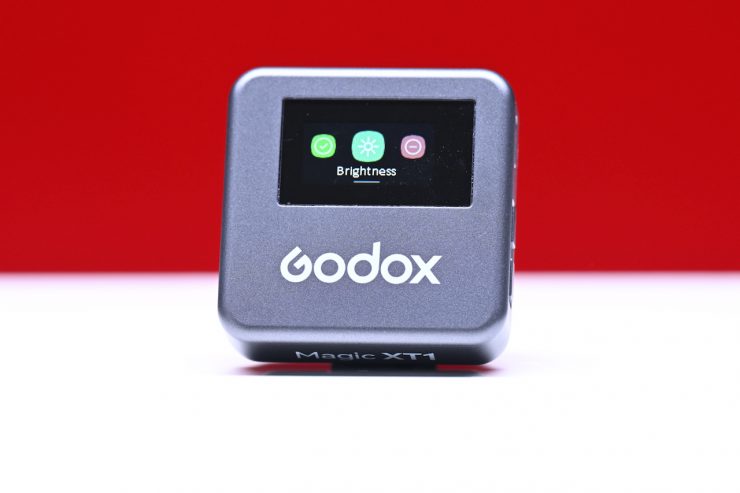
There is a basic menu where you can make changes to a variety of parameters.
Overall, the UI and operating system are reasonably good, but the controls are very basic.
Pairing
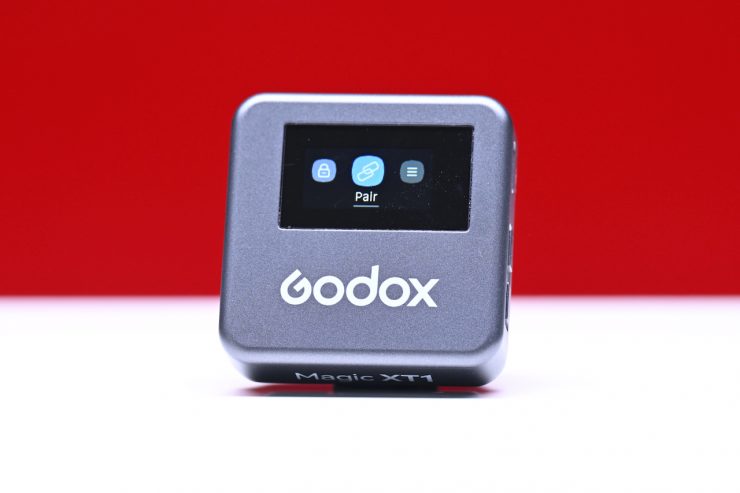
The TX units are supposed to be paired out of the factory, however, I found that one of the TX units wasn’t paired up. Now, I followed the instructions in the manual and I couldn’t get it to pair no matter what I did.
Eventually I had to contact Godox to find out how to do it. Companies really should include troubleshooting in the manual as if I hadn’t of contacted the company, I would still be stuck.
Real World Performance
Claims and specifications are one thing but how does the Magic XT1 actually perform in the real world? For me, there are several things that are important when using wireless microphone systems:
- Usability
- Reliability
- Audio quality
- Range
Usability
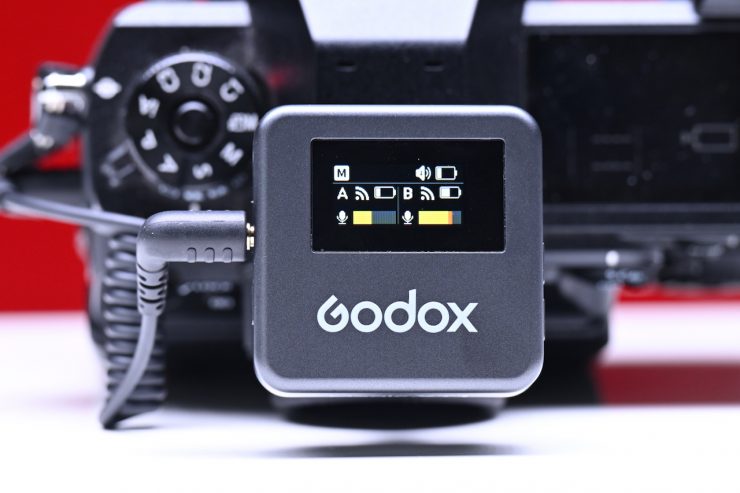
The usability of the Magix XT1 is reasonably good. The TX units and the RX unit are paired out of the box (although mine wasn’t), so it is just a simple case of turning everything on and you are good to go. Making adjustments is reasonably straightforward and Godox has designed the system so it is easy to use and operate, even for people who do not know wireless audio systems.

The TX units are pretty easy to mount, although thee was the issue with the clip making them droop on certain clothing that I previously mentioned.
The Magic XT1 is a decent enough budget run-and-gun solution when working with mirrorless hybrid cameras.
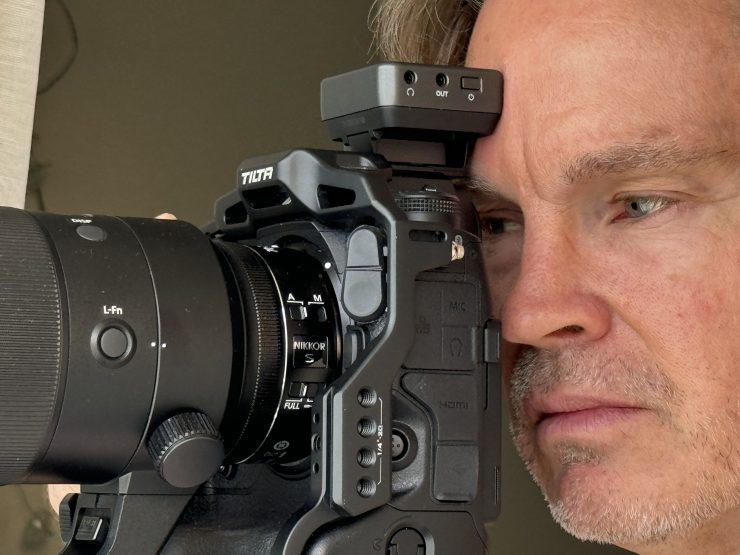
As the RX unit is quite big, when you use it on cold shoes that sit near or above a camera’s EVF it ends up hitting you in the face. Tis is far from idea.
Even though the Magic XT1 is designed to be used as a traditional radio mic I actually found a few more uses for it. As the TX units are reasonably small and discrete I found I could use it to capture ambient audio away from my camera. By simply just placing it in a room or closer to whatever object I was filming it allowed me to capture more immersive natural sound.
I also found that if I wanted to record audio notes when I was shooting I could just wear the TX unit and use it as a digital notebook. If you are using a camera that can record multiple tracks of audio this is not a bad option. This allowed me to leave audio notes to an editor in terms of what the shot was, where it could be used in a sequence etc. etc.
Another application would be to use the system as a low-cost IFB system where a director or someone who needs to communicate with a camera operator or anyone else for that matter could simply clip on a TX unit to their shirt. Whoever needs to listen could clip the RX unit onto their pants and just simply plug in a set of headphones.
Reliability
This is a hard one for me to comment on because it depends on where you use the system. With any wireless system, it may work well in one place, and another, it may not work at all. This is one of the pitfalls of using wireless mic systems that work on 2.4GHz.
As part of my audio tests, I wanted to see the quality and range with both TX units being close together to see if this affected the performance. I didn’t seem to have any effect, however, with any wireless system that uses 2.4GHz, the results can vary dramatically based on the environment you are in.
From my testing with the Magic XT1, I found that I didn’t have any problems with it not working or getting any interference as long as the RF and TX units stayed reasonably close together. You just shouldn’t confuse a system like this with more expensive wireless mics that work on dedicated frequency bands.
Range
The Godox Magic XT1 features high-gain 2.4GHz antenna, and it is claimed to have up to 200m / 656′ line-of-sight transmission distance.
To test the range of the system I remained in line of sight of the RX and started walking away with the TX. I went around 87.8m / 288′ line of sight and then it stated to drop out. 87.8m / 288′ was way less than the claimed range of 200m / 656′ (line of sight). I was somewhat surprised by this result. I found that if the TX unit was not facing the RX unit then the range got diminished greatly. When I placed the TX units on the front of a subject and had them walk away from the RX then I started to get audio dropouts around 50m / 164′.
As a comparison, the last 2.4GHz system I tested in this same spot was the Ulanzi U-Mic and I was able to get 350m / 1148′ without any issues. This was incredibly impressive and it blew away any previous 2.4GHz wireless audio system I have ever tested. As another comparison, when I tested the Rode Wireless Go II in the exact same place I only got 140m / 459ft line of sight before the audio started to drop out. Where I tested the Holland Lark M2 I only managed to get 100m / 228′ line of sight and then it dropped out completely.
Usually, you are only going to be able to obtain the claimed maximum operating range on flat, open terrain where there is little wireless interference. I did this test in the middle of Tokyo which is one of the most heavily congested RF and Wi-Fi traffic areas on the planet. I do these tests in the exact same place every time. It is important to note that the distance you can use them over will be determined by the environment you are in. In the environment you are in you may get better or worse results than me.
Audio quality
This is a hard one to comment on. There are so many factors that can determine audio quality. What microphone are you using, what camera are you using, and how good are your recording devices’ pre-amps, etc.
When you use the built-in omnidirectional condenser capsule on the TX units the quality is actually pretty decent. I wouldn’t say it is outstanding, but it’s certainly good enough for a lot of applications.
I did some tests using the Magic XT1 and I recorded audio directly into a Panasonic S1H. I did to tests, one with the DNR setting On and one with it Off.
Now, as I mentioned earlier, audio quality depends on so many variables, so the system may sound better or worse when used with certain cameras and audio recording devices. Mirrorless hybrids don’t tend to have very good pre-amps, and neither do a lot of the more affordable digital cinema cameras.
What is interesting to note, and this will be good news to users of mirrorless and DSLR cameras, is the output level coming out of the RX unit is reasonably high. What this means is you can set the input level on your mirrorless or DSLR camera really low and the signal coming out of the Magic XT1 RX is high enough that it produces the correct recording level. As most DSLR and mirrorless cameras have terrible pre-amps you want to set the input level on those cameras as low as possible so you get nice clean audio that doesn’t have any noise.
What do you get?
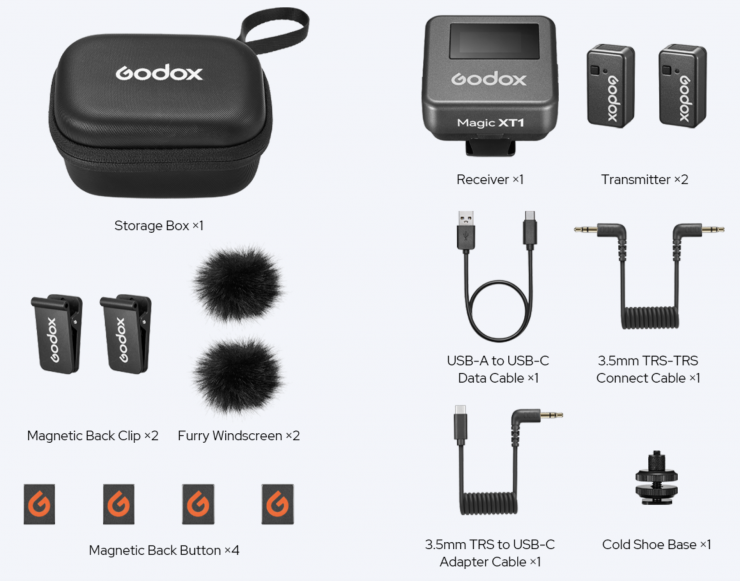
The Godox Magic XT1 kit contains the following items listed above.
Price & availability
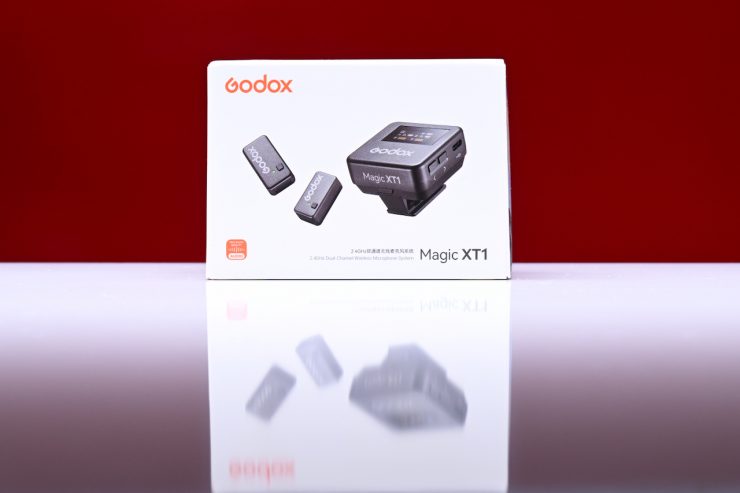
The Godox Magic XT1 is available to pre-order for $129 USD.
Competition
There is lots of competition in the 2.4GHz wireless audio space and the feature sets and capabilities tend to differ from system to system. Below are just some of the available systems that could be considered competition:
- Hollyland Lark M2 $179 USD
- RODE Wireless PRO 2-Person Clip-On Wireless Microphone System/Recorder with Lavaliers (2.4 GHz) $399 USD
- RODE Wireless GO II 2-Person Compact Digital Wireless Microphone System/Recorder $223.95 USD
- DJI Mic 2 $349 USD
- PicoMic 2 Pro & Receiver Kit $305.15 USD
- Synco WAir-G1-A2 Ultracompact 2-Person Digital Wireless Microphone System for Mirrorless/DSLR Cameras (2.4 GHz) $69 USD
- Hollyland LARK 150 Wireless Dual Microphone System (2.4 GHz) $199 USD
- Ulanzi U-Mic AM18 Wireless Pro Microphone $99.95 USD
- Comica Audio BoomX-D D2 Ultracompact 2-Person Digital Wireless Micro phone System for Mirrorless/DSLR Cameras (2.4 GHz) $179 USD
- Samson Go Mic Mobile Dual Channel Lavalier System Kit $249.95 USD
- Godox MoveLink Mini UC 2-Person Wireless Microphone System for Cameras & Mobile Devices $119 USD
- Comica Audio Vimo C3 Mini 2-Person Wireless Microphone System for Cameras Smartphones with 3.5mm (2.4 GHz) $103 USD
- Moza WE10 Pro Dual Transmitter Wireless Microphone System (2.4 GHz) $249.99 USD
Specifications
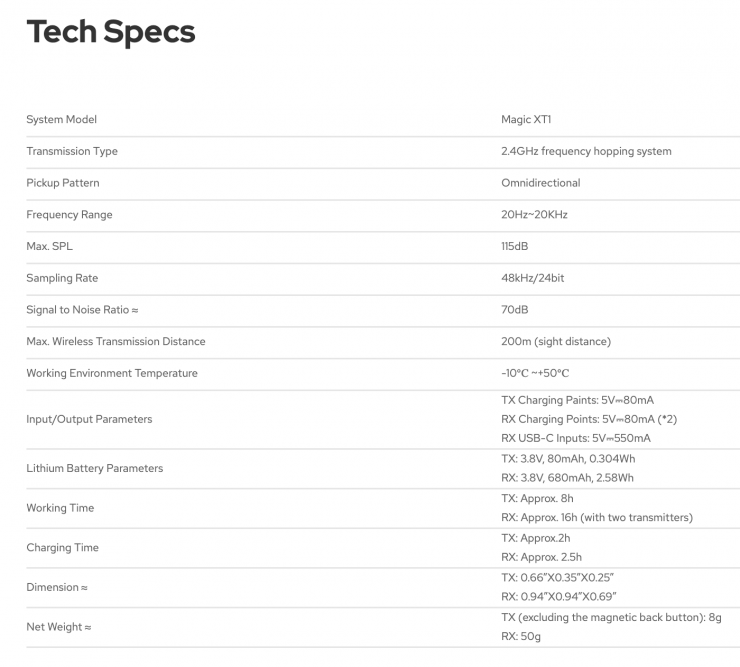
Conclusion
The Godox XT1 is yet another budget wireless microphone system. While it is decent enough and it features an interesting design where the TX units sit behind the RX unit for charging and storage, there isn’t anything overly unique or remarkable about it. That’s not necessarily a bad, thing, it is just an observation.
The range of mounting options is pretty good, and the TX units are relatively small. Some potential users may find the RX unit to be a little on the large side, and it does end up hitting your face if you are trying to shoot using a mirrorless hybrids EVF.
Personally, I could see myself having something like the Magic XT1 to just keep in my bag as a backup solution or if I require a quick and easy-to-use third or fourth radio mic. You never know when an emergency might happen and having a backup system that you can buy for under $150 USD makes a lot of sense.
It is nice that you can charge everything together using just one single USB-C cable, but in reality this isn’t that much different to systems that come with a charging case, its just a different way of doing things.
The system is pretty easy to use (although I did have the pairing issue) and the audio quality is decent enough for what it is. One of the negative aspects was that the operating range wasn’t anywhere near what was claimed, but again, the performance of wireless systems working in the 2.4GHz spectrum can vary greatly depending on where you use them.
The Godox Magic XT1 works as advertised and its pretty affordable, however it does face very stiff competition, especially from systems such as the Hollyland Lark M2.

